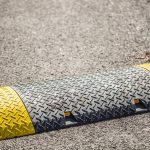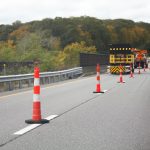Introduction
Explanation of the problem
Explanation of the problem: Traffic accidents are a major concern for both drivers and pedestrians. According to the World Health Organization, road traffic injuries are the leading cause of death among people aged 15-29 years. In addition, the economic cost of traffic accidents is significant, with estimates suggesting that it costs countries up to 3% of their gross domestic product. One of the main causes of traffic accidents is speeding, which can be addressed through the use of speed bumps. Speed bumps are an effective traffic calming measure that can help reduce the speed of vehicles and improve road safety.
Importance of reducing traffic accidents
Reducing traffic accidents is of utmost importance as it can save countless lives and prevent injuries. According to the World Health Organization, road traffic accidents are one of the leading causes of death globally, with an estimated 1.35 million fatalities each year. In addition to the human cost, traffic accidents also have a significant economic impact, costing countries billions of dollars in medical expenses, lost productivity, and property damage. Therefore, implementing measures such as speed bumps can help reduce the number of accidents and make roads safer for everyone.
What are speed bumps?
Definition of speed bumps
Speed bumps are physical traffic calming devices that are designed to slow down vehicles and reduce their speed. They are typically made of asphalt or concrete and are raised sections of the road that are between 3 and 4 inches high. Speed bumps are usually placed in areas where there is a high risk of accidents, such as near schools, hospitals, and residential areas. They are effective in reducing the speed of vehicles and can help prevent accidents caused by speeding. However, they can also be a source of frustration for drivers, especially if they are placed in areas where they are not needed.
Types of speed bumps
There are several types of speed bumps that can be used to slow down traffic and reduce the risk of accidents. One common type is the traditional speed hump, which is a rounded bump that spans the width of the road. Another option is the speed cushion, which is similar to a speed hump but has a gap in the middle to allow emergency vehicles to pass through without slowing down. Speed tables are another type of traffic calming device that are longer and flatter than speed humps, and are often used in residential areas. Finally, there are also raised crosswalks, which are designed to slow down traffic at pedestrian crossings and improve safety for pedestrians. Each type of speed bump has its own advantages and disadvantages, and the choice of which to use will depend on factors such as the speed limit, traffic volume, and road conditions.
How speed bumps work
Speed bumps are designed to slow down vehicles and force drivers to pay attention to their surroundings. They work by creating a physical barrier that forces drivers to slow down to navigate over them. This reduction in speed can help prevent accidents by giving drivers more time to react to unexpected situations, such as pedestrians or other vehicles. Additionally, speed bumps can help reduce the severity of accidents that do occur by reducing the speed at impact. While some drivers may find speed bumps frustrating, they are an effective tool for improving safety on roads and in parking lots.
How speed bumps can reduce traffic accidents
Forcing drivers to slow down
Speed bumps are an effective way to force drivers to slow down. These bumps are designed to create a jarring sensation when a vehicle passes over them at high speeds, which encourages drivers to reduce their speed. By slowing down, drivers have more time to react to unexpected obstacles or hazards on the road, reducing the likelihood of accidents. Additionally, speed bumps can be strategically placed in areas where accidents are more likely to occur, such as near schools or in residential neighborhoods. This helps to create a safer environment for pedestrians and other drivers on the road.
Increasing driver awareness
One way to increase driver awareness is to use reflective materials on speed bumps. This can make them more visible at night and during inclement weather. Additionally, signs can be placed before speed bumps to alert drivers to slow down. Another option is to use different colors or patterns on the speed bumps to make them stand out and catch the attention of drivers. By increasing driver awareness, the likelihood of accidents caused by speeding or reckless driving can be reduced.
Reducing the severity of accidents
Speed bumps not only help in reducing the number of accidents but also in reducing the severity of accidents. When a driver hits a speed bump, the car’s speed decreases, and the driver has to slow down, which reduces the impact of the collision. This can be especially helpful in areas with high pedestrian traffic, as it can prevent serious injuries or fatalities in the event of an accident. Additionally, speed bumps can also help reduce the damage to vehicles involved in accidents, which can save drivers money on repairs and insurance costs. Overall, speed bumps are an effective tool in reducing the severity of accidents and making roads safer for everyone.
Case studies
Examples of cities that have successfully implemented speed bumps
Many cities around the world have successfully implemented speed bumps to reduce traffic accidents. For example, in London, England, the installation of speed bumps on residential streets has led to a 50% reduction in accidents. In Bogota, Colombia, the use of speed bumps has helped to reduce traffic fatalities by 50% in just five years. Similarly, in Portland, Oregon, the installation of speed bumps in school zones has led to a 60% reduction in accidents involving children. These success stories demonstrate the effectiveness of speed bumps in reducing traffic accidents and improving road safety.
Data on the reduction of traffic accidents after speed bumps were installed
According to studies conducted by the National Highway Traffic Safety Administration (NHTSA), the installation of speed bumps has shown a significant reduction in traffic accidents. In fact, the NHTSA reported a 50% decrease in accidents on roads with speed bumps compared to those without. Additionally, the presence of speed bumps has been found to reduce the speed of vehicles, which in turn reduces the severity of accidents that do occur. These findings highlight the effectiveness of speed bumps in promoting safer driving habits and reducing the number of traffic accidents on our roads.
Potential drawbacks of speed bumps
Impact on emergency vehicles
Impact on emergency vehicles: One concern with speed bumps is that they may slow down emergency vehicles, such as ambulances and fire trucks, when responding to emergencies. However, studies have shown that the impact on emergency response times is minimal. In fact, some emergency services have even reported that speed bumps can help reduce accidents involving their vehicles by forcing drivers to slow down and drive more cautiously. Additionally, some speed bumps are designed to allow emergency vehicles to pass over them without slowing down, further minimizing any potential impact on response times. Overall, the benefits of reducing traffic accidents and improving safety for all road users outweigh any minor inconvenience to emergency services.
Noise pollution
Noise pollution is a common concern when it comes to speed bumps. The sound of vehicles passing over them can be disruptive to nearby residents, especially if the speed bumps are located in residential areas. However, there are ways to mitigate this issue. One solution is to use rubber speed bumps instead of concrete ones, as they produce less noise. Additionally, speed bumps can be strategically placed to minimize their impact on residential areas. For example, they can be placed near intersections or in commercial areas where noise is already present. Overall, while noise pollution is a valid concern, it should not overshadow the potential safety benefits of speed bumps.
Impact on vehicle wear and tear
While speed bumps can be effective in reducing traffic accidents, they can also have an impact on vehicle wear and tear. The repeated jolts and bumps caused by driving over speed bumps can lead to increased wear on a vehicle’s suspension system, tires, and other components. This can result in costly repairs and maintenance for drivers. However, some argue that the benefits of reducing accidents outweigh the potential costs of vehicle wear and tear. Additionally, proper design and placement of speed bumps can help minimize their impact on vehicles. Overall, it is important to consider both the safety benefits and potential drawbacks of speed bumps when implementing them on roadways.
Conclusion
Summary of the benefits of speed bumps
In summary, speed bumps can provide numerous benefits in reducing traffic accidents. They can effectively slow down drivers, making them more aware of their surroundings and reducing the likelihood of collisions. Speed bumps can also encourage safer driving behavior, such as reducing speeding and reckless driving. Additionally, they can improve pedestrian safety by providing a visible and physical barrier between pedestrians and vehicles. Overall, speed bumps can be a cost-effective and practical solution for reducing traffic accidents in residential areas, school zones, and other high-risk areas.
Recommendations for implementing speed bumps effectively
To implement speed bumps effectively, it is important to consider the location and design of the bumps. Speed bumps should be placed in areas where speeding is a problem, such as near schools, residential areas, and busy intersections. The design of the speed bumps should also be carefully considered to ensure they are effective in slowing down drivers without causing damage to vehicles. Additionally, proper signage and markings should be used to alert drivers of the presence of speed bumps and encourage them to slow down. Regular maintenance and monitoring of the speed bumps is also important to ensure they remain effective and safe for drivers and pedestrians alike.








